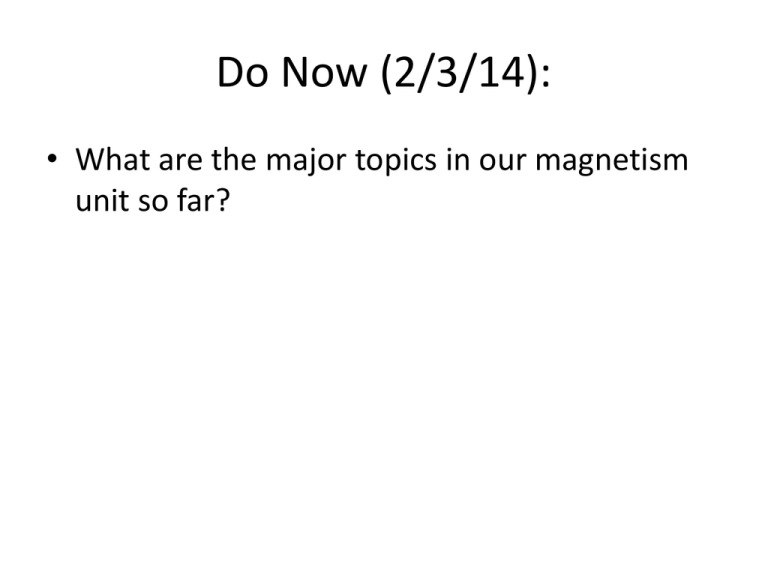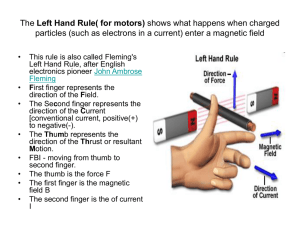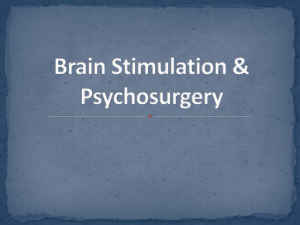Magnetism Quiz Review
advertisement

Do Now (2/3/14): • What are the major topics in our magnetism unit so far? Magnetism Quiz Review 2/3/14 1. A bar magnet is divided in two pieces. Which of the following statements is true? A. The bar magnet is demagnetized. B. The magnetic field of each separated piece becomes stronger. C. The magnetic poles are separated. D. Two new bar magnets are created. E. The electric field is created 2. A bar magnet is divided in two pieces. Which of the following statements is true about the force between the broken pieces if they face each other with a small separation? A. There is an electric repulsive force between the broken pieces. B. There is an electric attractive force between the broken pieces. C. There is a magnetic repulsive force between the broken pieces. D. There is a magnetic attractive force between the broken pieces. E. There is no force between the broken pieces since they are demagnetized. 3. Which of the following magnetic fields is correct for a single bar magnet? 4. A DC current produces a/an: A. Magnetic field. B. Electric field. C. Gravitational field. D. Electromagnetic field. E. None from the above. 5. An electric current flows into the page. What is the direction of the magnetic field? A. To the bottom of the page. B. To the top of the page. C. Clockwise. D. Counter-clockwise. E. To the right. 6. A straight long wire carries an electric current to the right. The current is placed in a uniform magnetic field directed into the page. What is the direction of the magnetic force on the current? A. Left. B. Right. C. To the bottom of the page. D. To the top of the page. E. Out of the page. 7. A straight long wire carries an electric current to the top of the page. The current is placed in a uniform magnetic field directed out the page. What is the direction of the magnetic force on the current? A. Left. B. Right. C. To the bottom of the page. D. To the top of the page. E. Out of the page 8. A positive charge moving with a constant velocity v enters a region of a uniform magnetic field pointing out the page. What is the direction of the magnetic force on the charge? A. Left. B. Right. C. To the bottom of the page. D. To the top of the page. E. There is no magnetic force on the current. 9. A negative charge moving with a constant velocity v enters a region of a uniform magnetic field pointing into the page. What is the direction of the magnetic force on the charge? A. Left. B. Right. C. To the bottom of the page. D. To the top of the page. E. There is no magnetic force on the current. 10. A positive charge moving with a constant velocity v enters a region of a uniform magnetic field pointing to the top of the page. What is the direction of the magnetic force on the charge? A. Left. B. Right. C. To the bottom of the page. D. To the top of the page. E. There is no magnetic force on the charge. 11. If the north pole of one magnet is brought near the south pole of another magnet, the poles will: a) repel each other. b) attract each other. c) not interact with each other at all. 12. Magnetic domains are a) regions that may or may not be magnetized. b) clusters of atoms randomly aligned. c) regions of atoms magnetically aligned. d) blocks of material. 14. Magnetic Fields do not interact with: a. moving electric charges b. stationary electric charges c. stationary permanent magnets d. moving permanent magnets 16. At which angle between v and B will the magnetic force on a moving charge be a maximum? A. 0° B. 30° C. 60° D. 90° 17. Which of the following statements are true about magnetic force? A. it is perpendicular to the magnetic field and the moving charge b. it is in the same direction as the magnetic field and the moving charge c. it is parallel to the direction of the magnetic field and the moving charge d. it is the parallel to the direction of the magnetic field and the moving charge 15. At which angle between v and B will the magnetic force on a moving charge be a minimum? A. 0° B. 30° C. 60° D. 90° 18. True or false: a charged particle moving parallel to B experiences no force. A. true b. false







